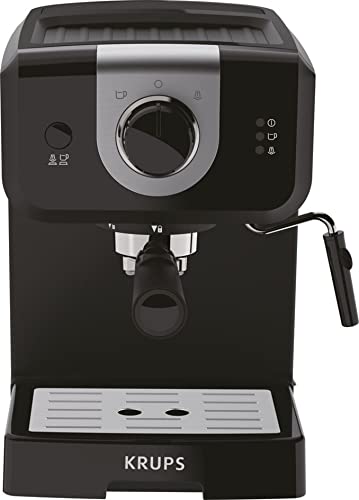Coffee and Espresso Machines
Espresso machines use pressure in order to make water into finely ground and tamped beans. They create a rich, delicious cup.
Good Housekeeping Institute experts recommend models that are brewed at 9 bars or less to ensure the best extraction. Beware of manufacturers who claim to use more pressure than is necessary.
Types
The espresso maker (also called a coffee maker and Espresso maker) produces coffee that is more concentrated, and of higher quality, and is more expensive than your typical cafe drinks. It makes use of an average of nine bars of pressure. They come with a range of features, such as the control of temperature and brew strength with programmable brewing as well as multiple sizes of drinks. Some machines may have steam wands that are either automatic or manual for creating texturized milk to create Latte art. There are three types of latte art that are semi-automatic; super-automatic; and automated. Each espresso machine comes with its own degree and type of automation.
Semi-automatic espresso machines are most sought-after for specialty coffee shops. This allows baristas to have complete control over the brewing process, however, it's not as user-friendly as a fully automatic machine. Still, linked internet page must grind beans, fill and tamp the portafilter, and adjust the extraction duration to achieve the best espresso shot.
Automatic machines come with an integrated mill that can measure and tamp your grounds. They automatically dispense enough water to make espresso, and usually have the capacity to programate the size of the beverage. In our laboratory tests, they were the most popular kind of espresso machine. They offer a good combination of control and consistency.
Functions
If you choose either a pump-driven machine or a steam-driven one, you'll find an in-line reservoir that houses the water that is used to make your coffee. There's also heating elements that heat the cold water to create the pressure necessary to extract coffee from ground.
When the brew button is pressed and the valve for water inlet is sealed to ensure that only hot water that is under intense pressure can flow through the portafilter, and then into the ground coffee. The water takes approximately 25 seconds to turn into espresso.
The tubing that is insulated and referred to as the hot-water tube extends from the reservoir to the spout that is on top of your machine. The heating element of resistance warms the water as water passes through the aluminum tube and warming plate.
After the spout has been turned on and your cup is placed under the spout so that the espresso is able to flow into your cup through the portafilter. The coffee maker also has the steam wand which you can use to heat up and froth the milk for espresso-based beverages such as cappuccino and lattes.
Automatic machines remove the guesswork out of brewing. They are easy to use, programmable, and are able to measure and grind beans as well as tamp down. In our Lab tests they tend to perform best because they are user-friendly and don't require an extensive amount of user expertise.
Materials
The inside of an espresso machine is a veritable collection of copper tubes, stainless steel boilers, and sophisticated firmware. Although they might appear to be complicated, their basic function is to convert hot water into finely ground coffee.
When buying an espresso machine it is important to consider the dimensions and space requirements as well as drink options, energy saving options, and brewing precision. Also, look for a steam knob that will activate the steam wand to froth milk and making artwork with latte. A pressure gauge on the front of the machine lets you know the operating boiler and pump pressure. Find a coffee maker with two needles, so that you can both the maximum and minimum pressure.
If you want more than espresso, then you should consider one that has different sizes of brew. This includes ristretto. There are also models that include an adjustable milk hopper to allow hands-free, hassle-free frothing and the ability to effortlessly switch between different kinds of milk. Choose a model that has an inbuilt softener, if you have hard water. This will help prevent mineral build-up and ensure that your espresso stays fresh.

Certain manufacturers employ a thermostat that is digital, integral and proportional to maintain a certain temperature range when making espresso. This ensures a excellent espresso cup every time. It also helps reduce cost of energy, as the machine only runs when it's required.
Maintenance
Since espresso and coffee machines become more widely available for home use, the proper maintenance of these machines becomes more essential. Having the most efficient equipment can make all the world of difference in the taste of your coffee, but this is only true if your machine is functioning properly.
A regular maintenance and cleaning routine should include everything from cleaning the group head and steam wand to decaling, and finally changing the water filter every few days. If you make between two and five cups of coffee each day, it is recommended to clean the main parts of the machine once a week. However, some parts of the machine, such as the grinder and water tank must be cleaned every two or three weeks.
In addition, you should backflush your machine every week. This is done by locking the portafilter in place and running the brew cycles many times. This will help get rid of any coffee ground or oil that has been left behind. You can also use a brush and cleaner specifically designed for espresso machines to clean the portafilter.
Maintaining your coffee machine and espresso correctly will also help it last longer. It is important to take care of the expensive espresso machine.
